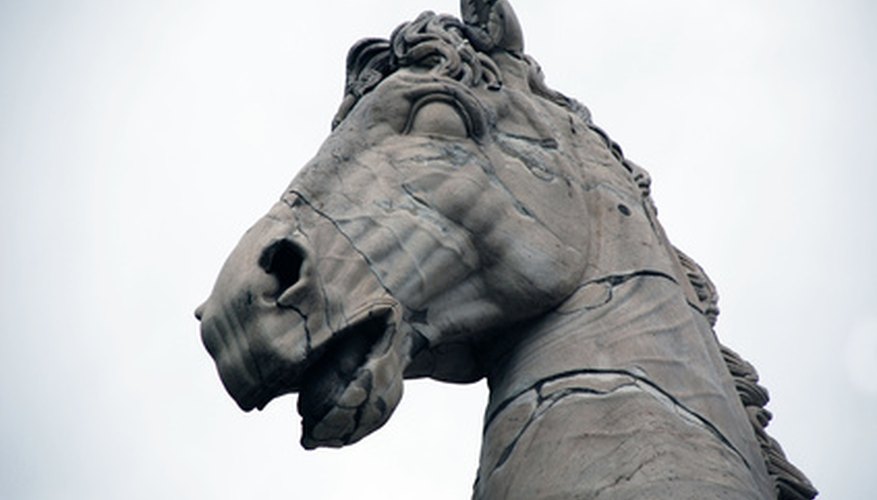The lessons presented by the Trojan horse have implications that reach into modern times. A Trojan virus is named because it acts just like the Trojan horse in the Ancient Greek story. The term "Trojan horse" is also a metaphor used to describe something that looks helpful, but is actually harmful. Building a model of the Trojan horse can create a teaching moment where you or your students can learn about history as well as a thing or two about modern times.
- The lessons presented by the Trojan horse have implications that reach into modern times.
- Building a model of the Trojan horse can create a teaching moment where you or your students can learn about history as well as a thing or two about modern times.
Draw two horses on the side of a piece of cardboard. Each horse should be 15 cm (6 inches) tall by 30 cm (12 inches) wide. The horse bodies should be the same size as the side of the kitchen match box.
Cut a piece of styrofoam so that it is 10 cm (4 inches) wide and 30 cm (12 inches) long. Paint the styrofoam brown.
Draw wheels into the cardboard that are 7.5 cm (3 inches) in diameter.
Paint the wheels, platform, horse and match box. Cut all the pieces from the cardboard.
Glue a horse to each side of the match box. Glue the horse's hooves to the sides of the styrofoam platform.
- Cut a piece of styrofoam so that it is 10 cm (4 inches) wide and 30 cm (12 inches) long.
- Glue a horse to each side of the match box.
Push each bamboo skewer through the centre of a wheel. Line each skewer up along the styrofoam side so that the wheels are directly below the horse's hooves and push the skewer's through the side of the styrofoam. Push the skewer through the other side of the platform and place the remaining wheels onto the other side of the platform.
